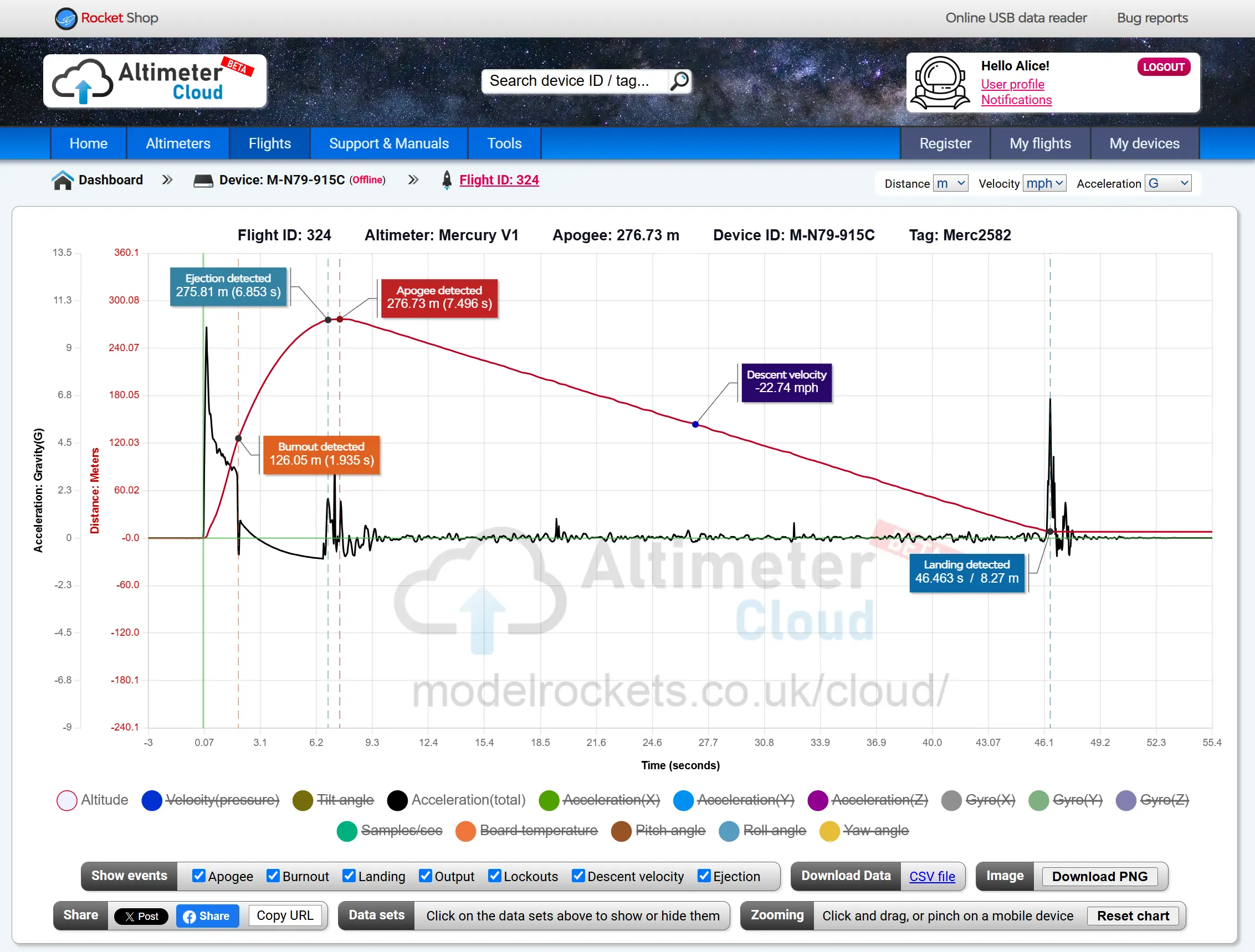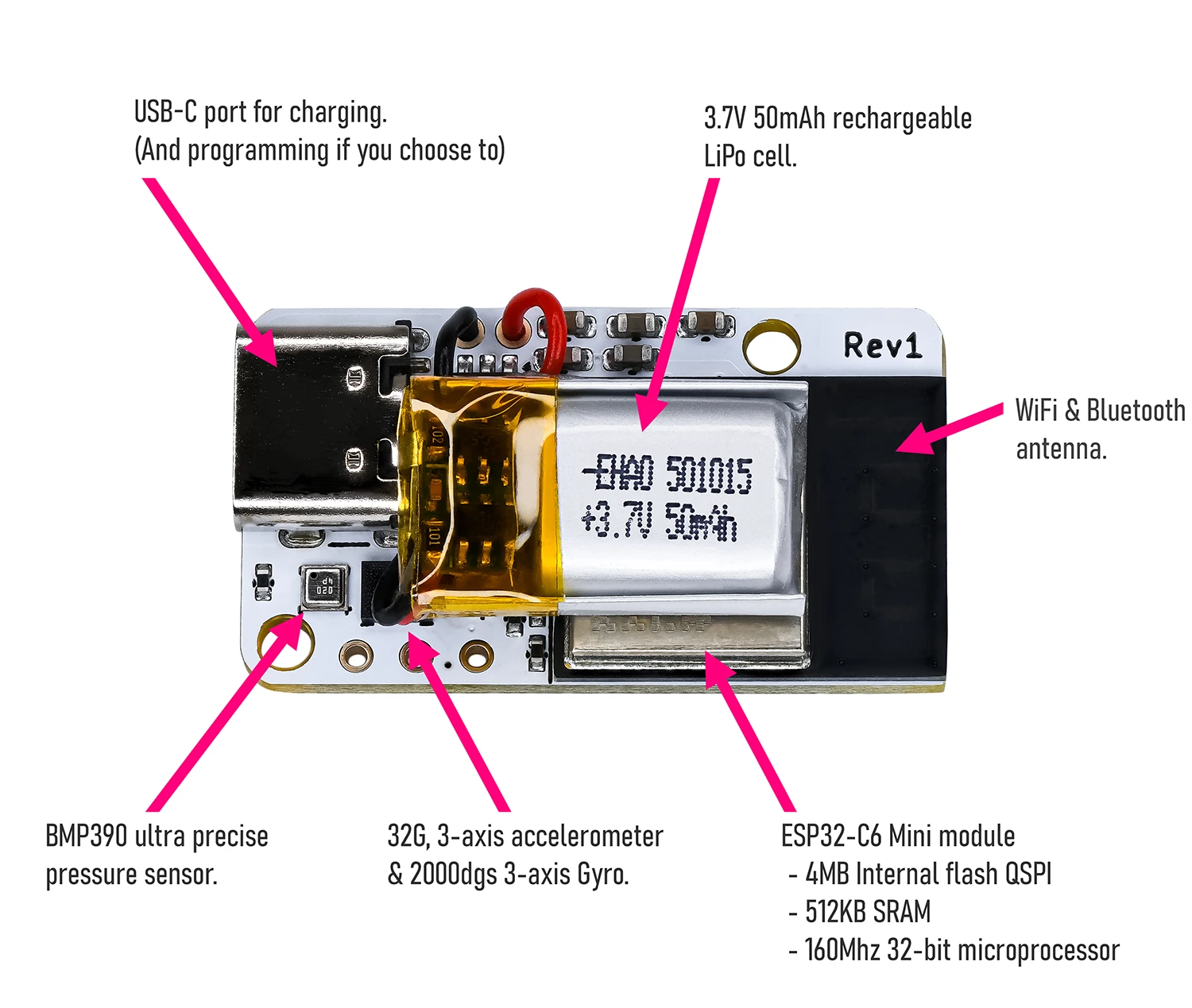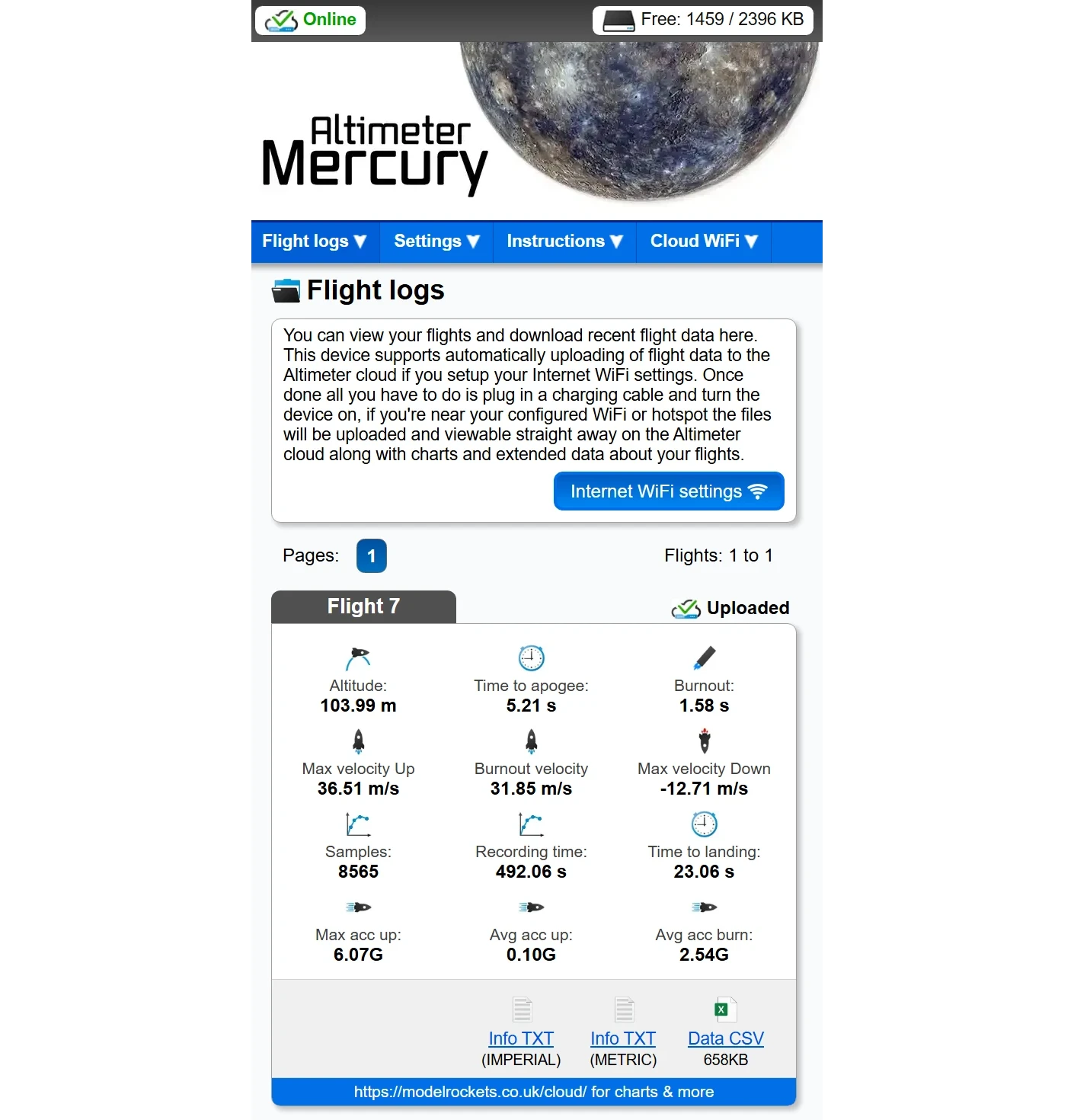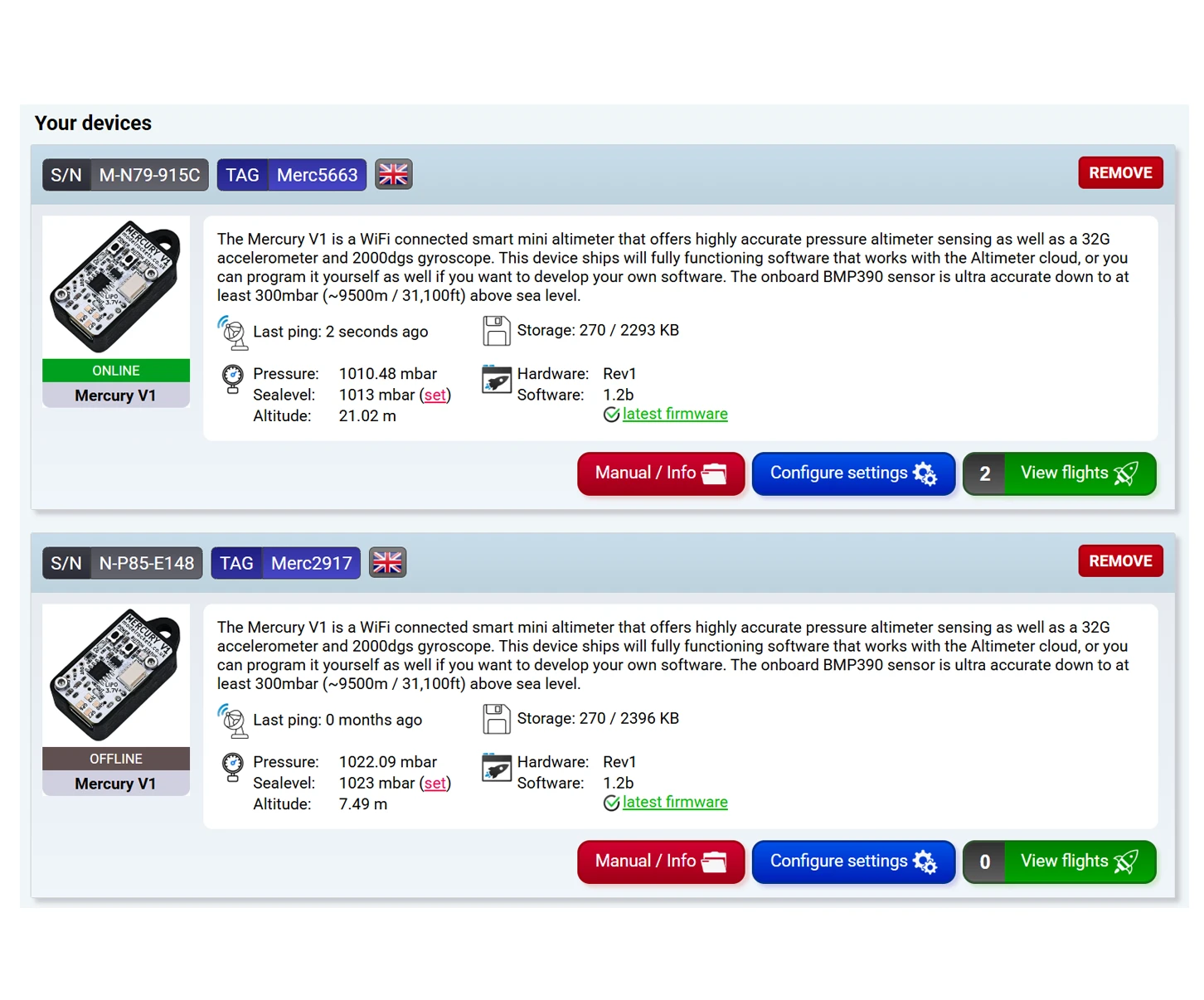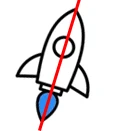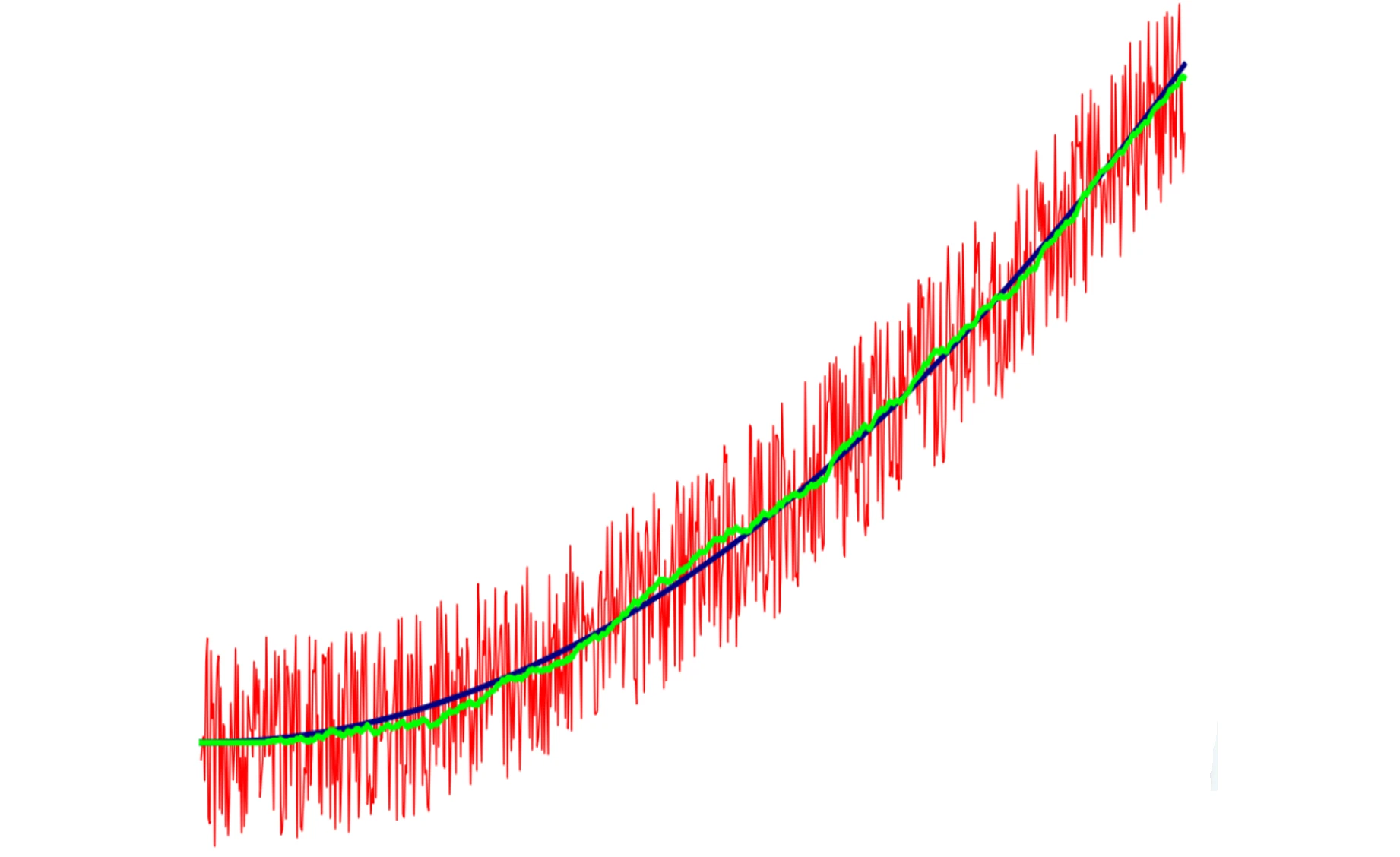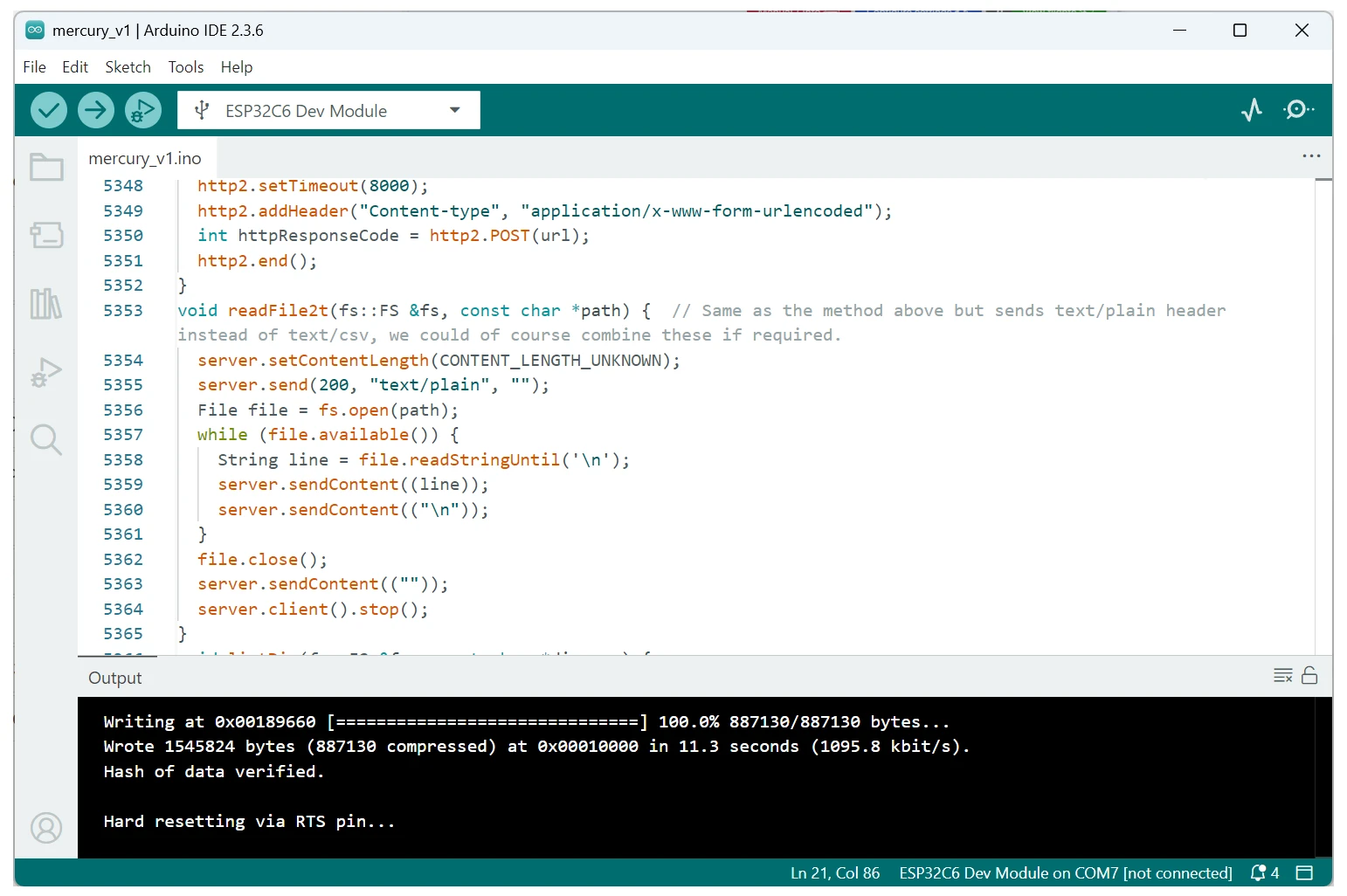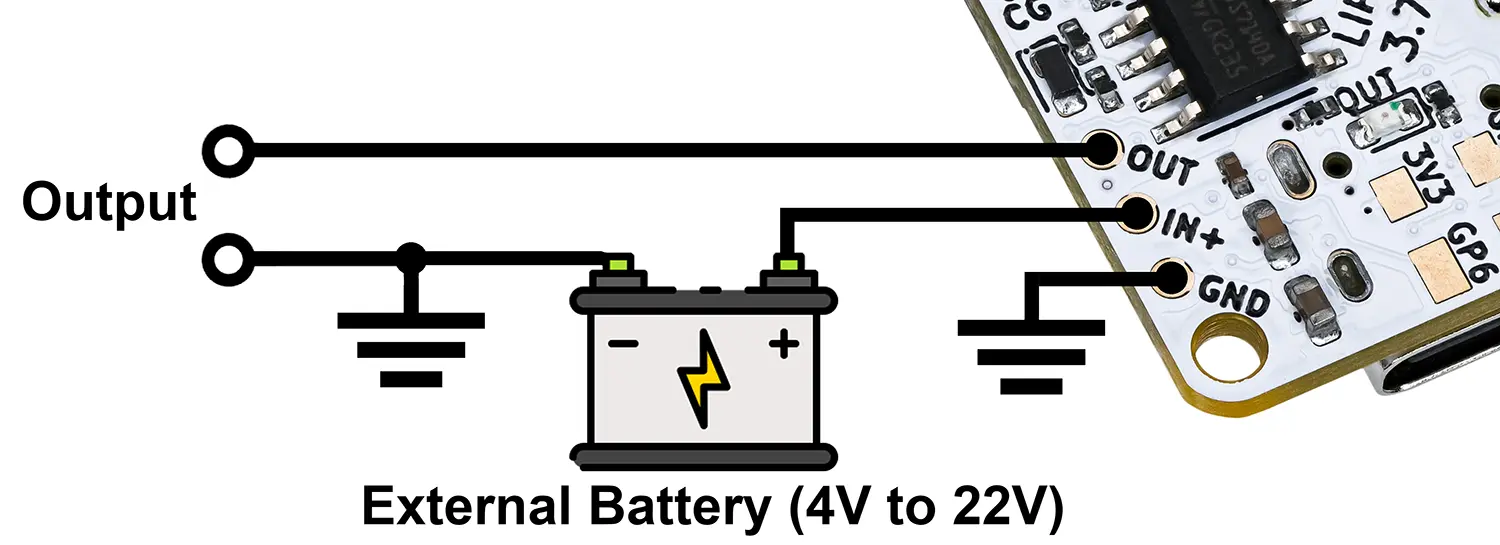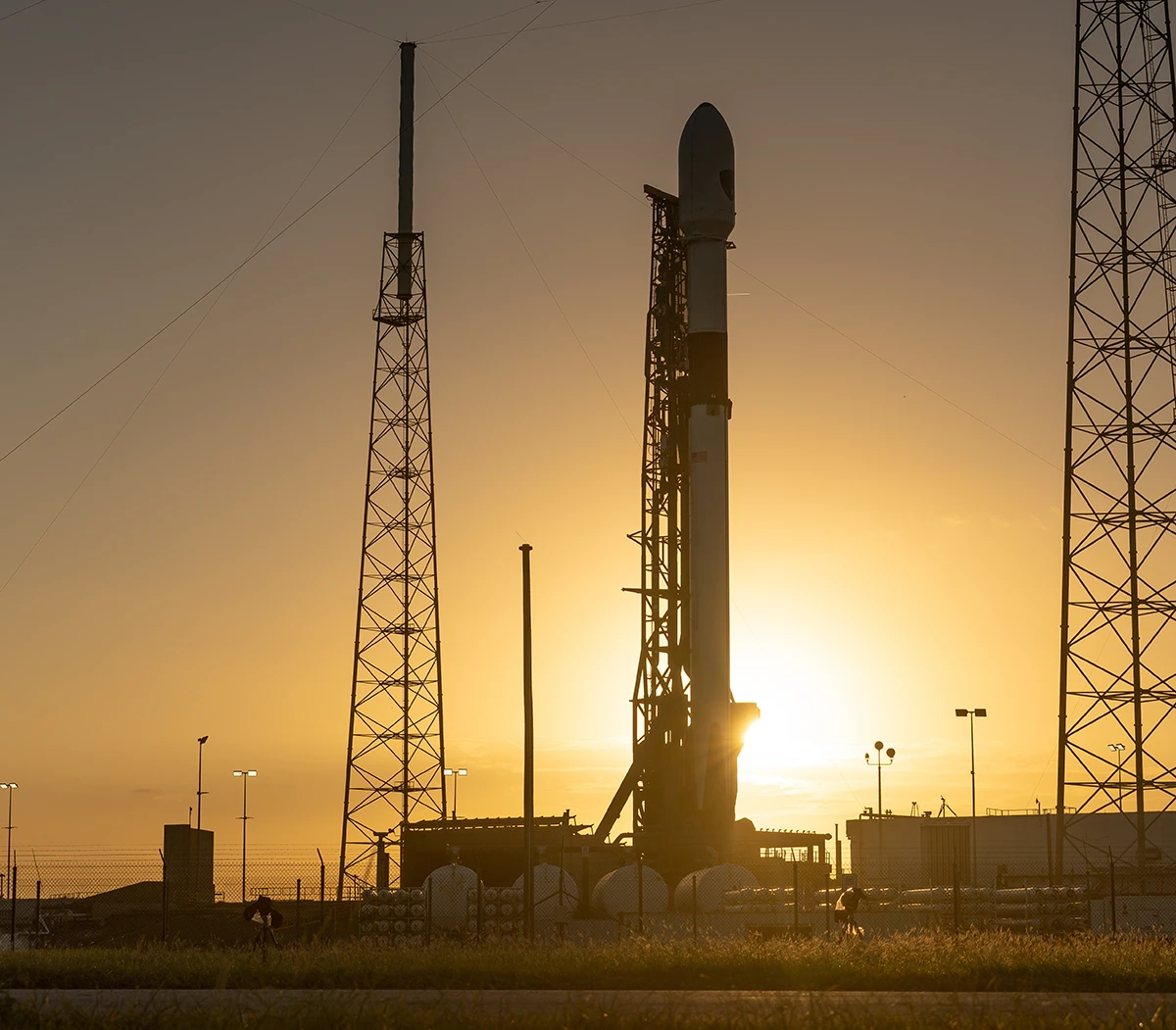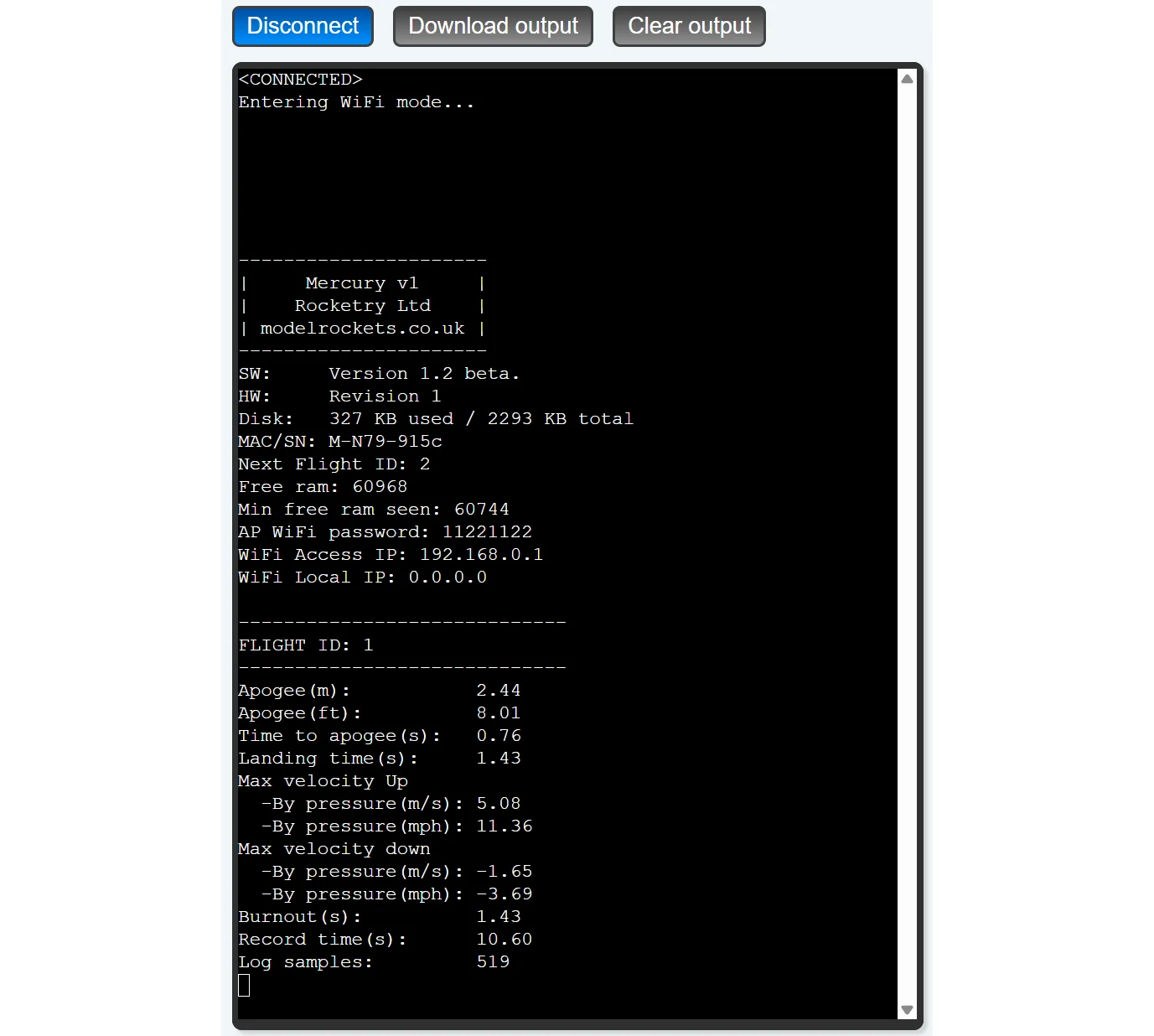The Mercury is a small, smart altimeter that easily fits in rockets that are at least 18mm in diameter (22mm in it's default case or 18mm if you use the included optional electronics bay mount, or your own mount).
It is extremely easy to use and you simply need to turn it on and then fly your rocket, it can even sit on the launch pad waiting for launch for up to 4.5 hours without running out of power from a full charge. And if you do need to top up the charge, a short USB-C cable is included to charge it from your phone in the field. A full charge will typically only use around 1% of your phone's battery.
Designed and developed in house right here at modelrockets.co.uk to be a great additional component in your next rocket.
The altimeter is ready to fly with all the default settings uploaded already so all you really need to do is turn it on and you are set for flight. There are also plenty of advanced settings should you want to fine tune your altimeter or use it for a not quite standard project.
Currently the Mercury is in the final Beta firmware so we're offering a 31% discount for the next few weeks for anyone that wants to Beta test the altimeter. You will be able to update to the release firmware on the altimeter cloud website in just a few clicks too when it's released!
The Mercury is a capable altimeter which offers you tons of detail about your rocketry flights. It will fly reliably to 9200 meters (30,000 ft) altitude before the pressure sensor exceeds it's specifications.
The addition of a great accelerometer and gyroscope for each axis lets the altimeter calculate and detect additional flight events such as motor burn out, deployment events and fine tuning of the landing time.
It also lets us calculate flight angles such as tilt from vertical, pitch, roll and yaw to let you see how straight your rocket flew. You can even use the gyroscope data to see how aligned you got your fins by it's rotation speed.
No hassle charts
The Mercury works with our Altimeter Cloud system to let you view your data with ease. Detailed high quality charts are produced automatically with plenty of ways to share and view them.
All you have to do is configure your home WiFi or mobile hotspot WiFi on your altimeter so it can upload your flight data to the cloud when it sees your WiFi and is put into WiFi mode.
All flights are then automatically uploaded with no storage limits or restrictions on how many flights you can store.
View sample chart
High quality sensors
Don't let the small size fool you!
The Mercury altimeter has high quality sensors to enable it to function. It utilises a Bosch BMP390 pressure sensor to calculate altitude. We've also added a 32G 3-axis accelerometer and 2000 degrees per second 3-axis gyroscope as well.
The Mercury V1 has a relative accuracy of just 25cm or better. In testing we found it could accurately measure the floor to desk surface within just a few centimeters with ease.
The pressure sensor also automatically compensates for changes in temperature when calculating altitude.
Internal WiFi & Webserver (Access point)
Our altimeter has internal WiFi that can connect to the internet to upload your flights to the Altimeter Cloud.
It can also let you connect to it to configure it directly with your phone or other device. This lets you view flight details in the field even if you don't have internet available where you are.
You can also view flight summaries via USB Serial or configure it to use your mobile hotspot to upload and use the Altimeter Cloud even in the field!
Configure from the Altimeter Cloud
You can configure your altimeter to connect over the internet to our Altimeter Cloud. All you have to do is enter your WiFi settings.
You can then add and manage your devices on the Altimeter Cloud with ease from anywhere in the world. All settings are available on the website.
Flight logs can have additional details added to them and then they can be shared easily on the Altimeter Cloud with anyone you choose.
You can also update your firmware and view the USB serial data using our web tools.
Data Logging & Charts
The Mercury logs plenty of data which you can choose to upload automatically to our Altimeter Cloud. This will then offer you charts directly in your web browser that you can share easily too. Here is a brief summary of the data the Mercury logs.
Prediction and Correction Filters
We use advanced filters such as Kalman and Madgwick to remove noise and reveal better data and angles during flight.
Kalman filters will estimate the current state based on previous states before refining the prediction in the correction phase using new sensor measurements.
The result is an almost perfect real result to the data your altimeter records.
This gives the true smooth flight profile that your rocket will have flown without the noise. This helps offer more accurate readings such apogee, as the noise or erroneous reads will not be present on top of the maximum altitude.
It's also a development board
If you want to have a go at programming your own altimeter, or use the Mercury for a different function then you can.
The Mercury can be programmed yourself using Arduino IDE or ESP IDF applications. Some example Arduino IDE code is included in the manual to get you started.
What's more, you can always put our firmware back on in just a few mouse clicks using our web based firmware tool on the Altimeter Cloud when you want to use the altimeter as intended again.
Always check where you are flying allows custom flight computers if you're intending to do this of course!
No rush to launch!
Our altimeter has a huge 4.5 hours life while it's sitting waiting to launch. This is achieved by putting the processor to sleep for fractions of a second between samples generating a really low average power use.
Our altimeter uses a dynamic pressure sample as the launch pressure, rather than the one that was present when it was turned on. This means that changes in atmospheric pressure while you wait will not affect the altimeters accuracy during flight.
Accidental launch detection prevention ensures that even the strongest gust of wind won't trigger a launch by disrupting the pressure sensor.
Quick USB Data
If you need to verify flight information quickly and easily, perhaps from lots of devices at a competition for example, you can use the USB serial option.
Either plug the device in to your phone and use a USB Serial app, or use our online USB Serial viewer on the altimeter cloud on your laptop. Once connected just press the button to see the last two flights summaries.
The altimeter serial is also shown if you want to be sure a team has submitted the correct altimeter that was flown.
